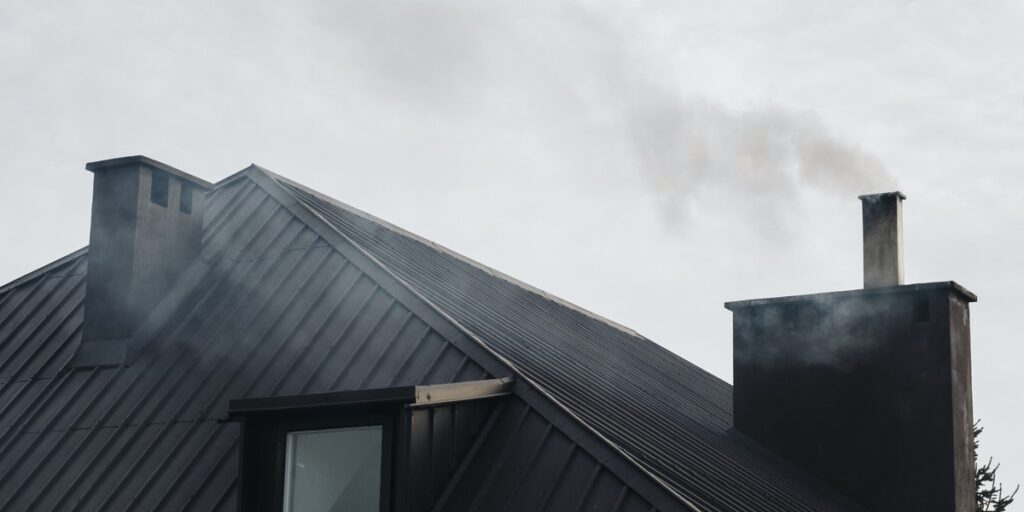Why Does Regular Chimney Care Matter?
Many homeowners only think about their chimney inspection when lighting the first fire of the season. What often goes unnoticed is the silent damage caused by soot, moisture, and neglect. Left unchecked, these issues escalate into expensive repairs that could have been avoided with regular maintenance. One of the most overlooked yet crucial tasks is a routine chimney inspection.
What Happens If Chimneys Are Ignored?
A neglected chimney is more than an eyesore—it’s a costly liability. Soot buildup reduces efficiency, cracked masonry allows toxic gases to leak indoors, and hidden creosote deposits increase fire risk. Small cracks in liners grow bigger over time, often requiring partial rebuilds. Pests and debris also block airflow, making smoke circulate back into the living area. These issues usually remain invisible until they’ve already caused damage, forcing homeowners to spend far more than they would on preventive care.
What Are the Most Common Chimney Issues?
Several recurring problems appear in poorly maintained chimneys:
Creosote buildup from frequent wood burning
Water leaks weakening mortar and bricks
Smoke stains on walls and ceilings
Damaged flue liners that compromise safety
Blocked chimneys from nests or leaves
Draft problems that reduce heating efficiency
When homeowners search for answers online, they often use terms like chimney sweep cost, fireplace repair, soot cleaning, flue maintenance, chimney cap installation, and chimney repair near me. These are not just popular keywords but real concerns people face daily. Addressing these problems early saves money, improves home safety, and ensures a cozy winter.
What Benefits Do Professional Services Offer?
Hiring experts provides both financial and safety advantages. Professionals remove buildup more thoroughly, preventing costly repairs down the road. They use tools that detect hidden cracks or leaks before they expand. Energy efficiency improves, saving money on heating bills. Most importantly, they reduce the risk of fires and carbon monoxide exposure. As one experienced sweep explains: “A clean and inspected chimney is far cheaper than an emergency rebuild. Homeowners save hundreds by spotting problems early.”
What Role Does Chimney Inspection Play?
A Chimney Inspection goes beyond surface cleaning. Professionals check the structural integrity of the flue, masonry, and cap. They look for water intrusion, cracks in liners, and creosote deposits that pose fire hazards. With specialized cameras, technicians identify problems invisible to the naked eye. Inspections also guide homeowners on whether repairs, relining, or waterproofing are needed, making them one of the most valuable investments in long-term home maintenance.
What Does Professional Service Typically Cost?
Service Type Average Cost (USD) What’s Included
Basic Chimney Cleaning $100 – $250 Soot removal, creosote brushing
Level 1 Inspection $75 – $150 Visual check, basic safety review
Level 2 Camera Inspection $150 – $400 Video scan, liner and structure check
Chimney Liner Repair $500 – $2,500+ Relining, sealing, and reinforcement
Cap/Top Installation $200 – $600 New chimney cap and weatherproofing
Major Rebuild $1,500 – $5,000+ Masonry replacement and full restoration
Disclaimer: Costs vary depending on location, chimney size, and damage severity.
What Key Features Should Homeowners Look For?
When hiring a sweep or inspector, ensure the service includes:
Certified technicians with training and licensing
Use of camera inspections for accurate assessment
Full-service cleaning and creosote removal
Moisture control through caps and sealants
Affordable maintenance plans for yearly checks
Emergency service availability
These features guarantee thorough care that prevents future repairs.
How Do These Services Improve Safety?
The safety factor cannot be overstated. Dirty or damaged chimneys are leading causes of house fires. Cracks in the liner let carbon monoxide leak into living areas, which can be life-threatening. Regular cleaning and inspection ensure smoke exits properly, creosote does not ignite, and structural stability is maintained. Homeowners not only save money but also protect their family’s health and well-being.
What If an Emergency Strikes?
Chimney emergencies rarely happen at convenient times. Smoke backing up during a winter storm or a sudden chimney fire requires immediate attention. Reputable companies offer 24/7 emergency chimney repair, addressing blocked flues, fire damage, or collapsed masonry on the spot. Having a trusted contact for emergencies prevents further damage and provides peace of mind.
Why Should You Act Now?
Delaying chimney maintenance is like putting off car servicing—it may seem fine today, but the costs multiply later. By scheduling professional care now, you prevent damage, save money, and ensure a safe and efficient fireplace all winter long. Protect your home today—book a certified chimney sweep and inspection before the next cold season begins.
FAQs
1. How many times should a chimney be cleaned?
Schedule yearly, preferably before the heating season begins.
2. How much does chimney cleaning cost?
Typically $100–$250 depending on buildup and location.
3. What is the difference between a chimney sweep and inspection?
A sweep removes soot; an inspection checks structure and safety.
4. Can creosote cause a chimney fire?
Yes, it’s highly flammable and a major fire hazard.
5. How do I know if my chimney needs relining?
Signs include cracks, smoke leakage, or poor draft performance.
6. Are chimney caps worth installing?
Yes, they prevent rain, animals, and debris from entering.
7. What is included in a Level 2 inspection?
Camera scans, detailed structure checks, and safety evaluation.
8. Can water damage affect chimney performance?
Yes, it erodes masonry and causes costly structural issues.
9. Is professional chimney cleaning better than DIY?
Yes, experts have tools and training to remove dangerous buildup.
10. Does insurance cover chimney repairs?
Policies may cover sudden damage but usually not neglect.
Read More: Chimney Sweep



